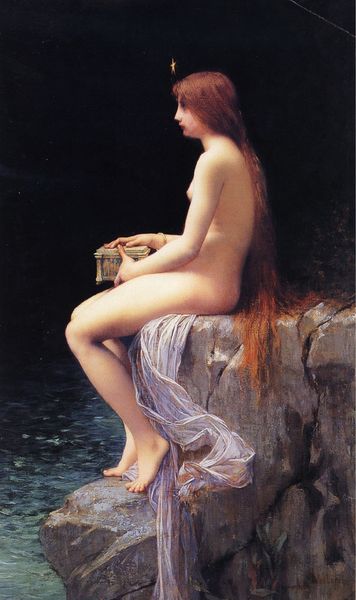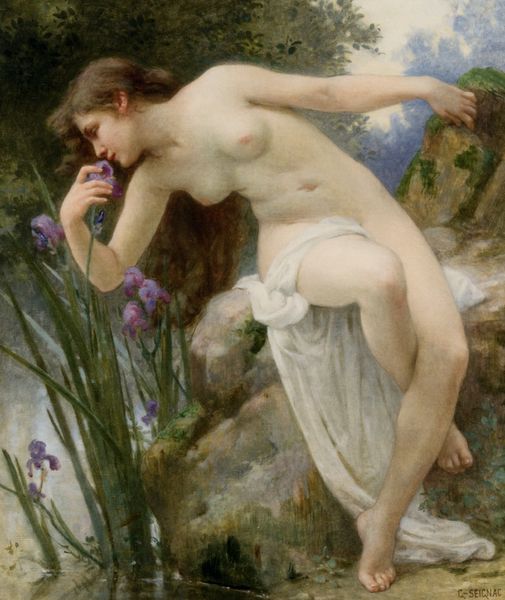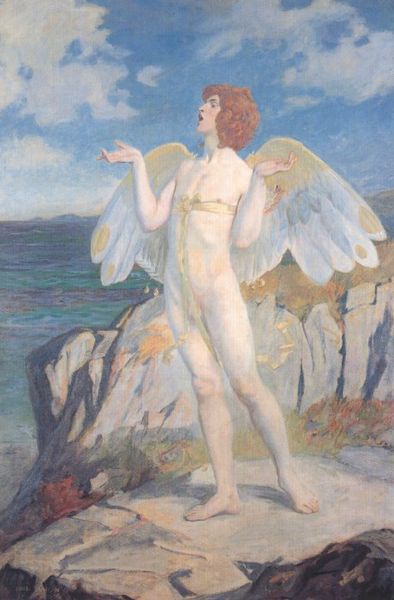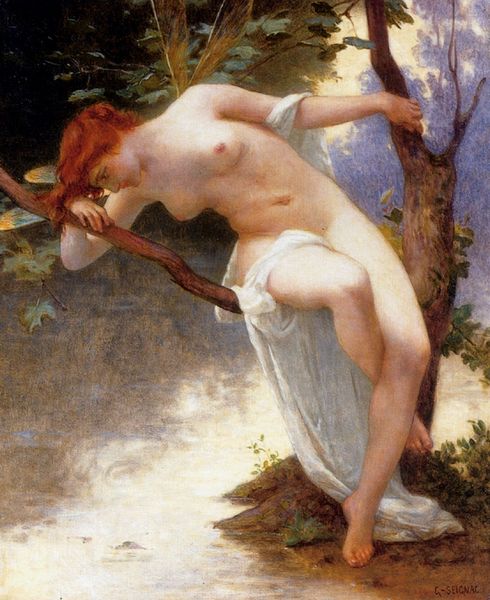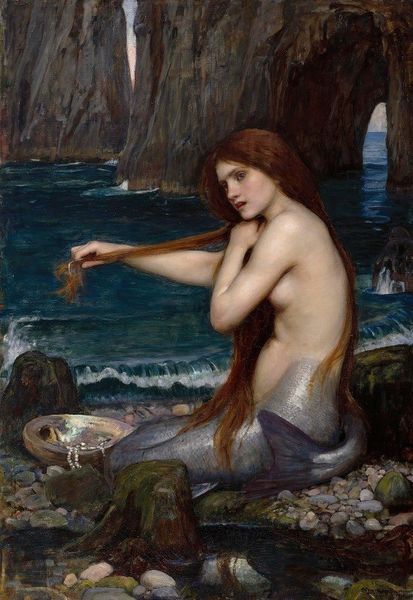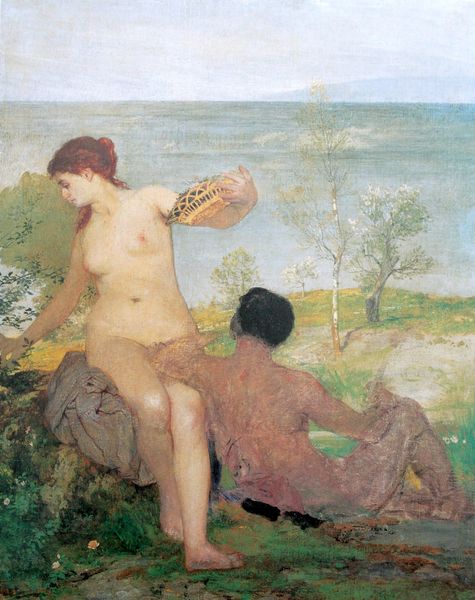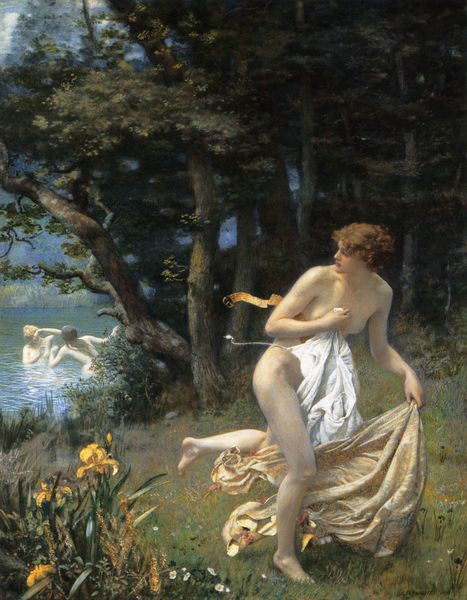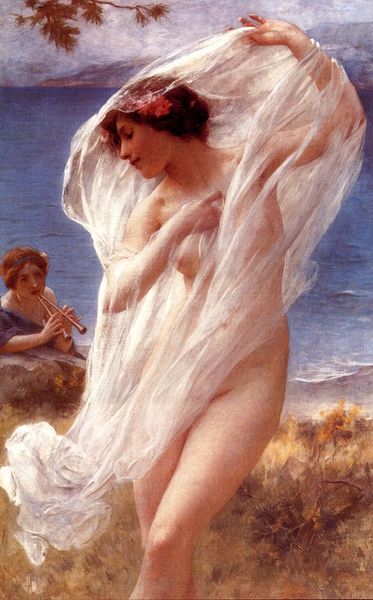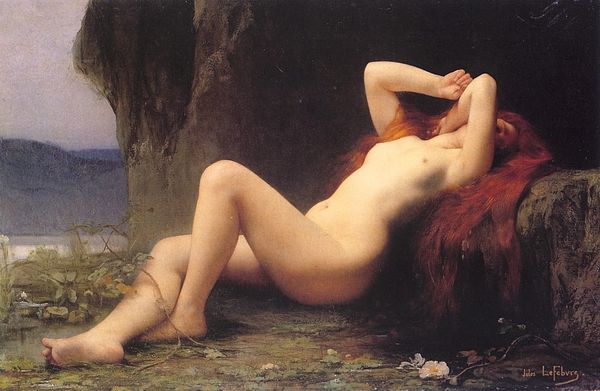
Copyright: Public domain
Curator: "Innocence," painted by Joan Brull in 1902, depicts a nude child blowing bubbles by the sea. The way the artist rendered the figure is so delicate and ethereal. What do you see in this piece? Editor: I'm struck by the complex symbolism and potential layers of meaning, considering Brull's Symbolist style. How can we interpret the figure, especially in relation to themes of identity and perhaps even social commentary from that time? Curator: I think you’ve hit upon something very important. Symbolism, at its heart, invites a radical re-evaluation of visibility and power, so, rather than a purely aesthetic exercise, perhaps it’s a response to the political constraints of the era? Where does this depiction of innocence fit within fin-de-siècle anxieties about societal change and the evolving roles assigned to different bodies, particularly young female bodies? What does the bubble, so fragile and ephemeral, symbolize within this broader social context? Editor: So the painting goes beyond a simple portrait. What do the wings suggest? Is this meant to be a secular angel? Curator: That’s a good point. It invites us to question, 'innocence' from whose perspective, and at what cost? Remember that Brull was working during a time of immense social upheaval. To me, these figures can also be interpreted as allegories for a culture grappling with new ideas and social structures. And that sense of grappling, is not without some degree of anxiety. How effective do you think this message is, considering the art historical moment? Editor: It gives me a lot to think about! I now see "Innocence" as more than just a visually appealing work. I can now look deeper to think about gender, identity, and social anxieties during that time period. Curator: Exactly! Seeing art as a mirror reflecting these issues makes the experience so much richer.
Comments
No comments
Be the first to comment and join the conversation on the ultimate creative platform.
